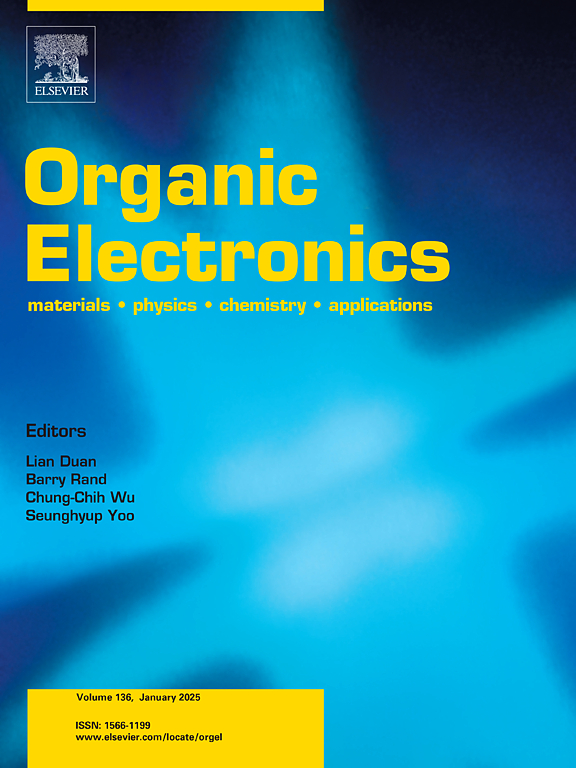Perovskite solar cells with boosted device performance through the incorporation of formamidine acetate processing additives
IF 2.6
4区 工程技术
Q3 MATERIALS SCIENCE, MULTIDISCIPLINARY
引用次数: 0
Abstract
Metal halide perovskites are renowned for promising photovoltaic materials for approaching cost-effective solar cells. The prevalent method for crafting metal halide perovskite thin film leads to extensive defects and fragile interfacial contacts, resulting in severe non-radiative charge carrier recombination and ion migration, consequently decreasing both efficiency and stability of perovskite solar cells. In this study, we report enhanced efficiency and stability of perovskite solar cells with suppressed photocurrent hysteresis through the incorporation of formamidine acetate as the processing additive in the preparation of metal halide perovskite thin film. Systematically studies indicate that the formamidine acetate processing additives could enlarge the crystallinity and effectively suppress the defect as well, resulting in boosted and balanced charge transport of the resultant metal halide perovskite thin film. As a result, the perovskite solar cells based on the metal halide perovskite thin film processed with the formamidine acetate additives exhibit 22.29 % of power conversion efficiency, which is more than a 17 % enhancement compared to those based on the pristine metal halide perovskite thin film. Moreover, the perovskite solar cells based on the metal halide perovskite thin film processed with the formamidine acetate additives could maintain its 50 % initial efficiency value for nearly 1400 h of operation and suppressed photocurrent hysteresis. Our studies present an effective strategy to approach high-performance perovskite solar cells.

钙钛矿太阳能电池与提高设备性能,通过掺入醋酸甲脒加工添加剂
金属卤化物钙钛矿是众所周知的有前途的光伏材料接近成本效益的太阳能电池。目前普遍采用的金属卤化物钙钛矿薄膜制备方法存在大量缺陷和脆弱的界面接触,导致严重的非辐射载流子复合和离子迁移,从而降低了钙钛矿太阳能电池的效率和稳定性。在本研究中,我们报道了在制备金属卤化物钙钛矿薄膜的过程中,通过加入醋酸甲脒作为加工添加剂,提高了钙钛矿太阳能电池的效率和稳定性,抑制了光电流滞后。系统研究表明,醋酸甲脒加工添加剂可以扩大结晶度,有效抑制缺陷,从而促进金属卤化物钙钛矿薄膜的电荷输运平衡。结果表明,经醋酸甲脒添加剂处理的金属卤化物钙钛矿薄膜太阳能电池的功率转换效率提高了22.29%,比原始金属卤化物钙钛矿薄膜太阳能电池的功率转换效率提高了17%以上。此外,经醋酸甲脒添加剂处理的金属卤化物钙钛矿薄膜钙钛矿太阳能电池在运行近1400 h的时间内可以保持50%的初始效率值,并抑制了光电流滞后。我们的研究提出了一种有效的方法来接近高性能钙钛矿太阳能电池。
本文章由计算机程序翻译,如有差异,请以英文原文为准。
求助全文
约1分钟内获得全文
求助全文
来源期刊

Organic Electronics
工程技术-材料科学:综合
CiteScore
6.60
自引率
6.20%
发文量
238
审稿时长
44 days
期刊介绍:
Organic Electronics is a journal whose primary interdisciplinary focus is on materials and phenomena related to organic devices such as light emitting diodes, thin film transistors, photovoltaic cells, sensors, memories, etc.
Papers suitable for publication in this journal cover such topics as photoconductive and electronic properties of organic materials, thin film structures and characterization in the context of organic devices, charge and exciton transport, organic electronic and optoelectronic devices.
 求助内容:
求助内容: 应助结果提醒方式:
应助结果提醒方式:


